Criminal Exploitation of Maritime, Air and Land Transport in Illicit Trade

Article by UCSC-Transcrime
Globalization has led to a growing interconnection between countries in terms of transport supply chains and movement of people. Although providing relevant opportunities for both EU companies and citizens, such interconnection also poses serious risks in terms of security of external and internal EU borders. EU Border Guards agencies and Law Enforcement Agencies continuously screen incoming passengers and goods to proactively identify potential threats.
Criminal organizations and individual offenders exploit a variety of transportation modi operandi to move illicit products. These modi operandi depend on several factors, such as the risk of detection, the scrutiny level of the border controls, the quantity of the illicit products, and the geographical distance to be covered.[1] Time to time, based on these factors one out of maritime, air or land modes of transport is preferred against the others.
Maritime mode of transport
Criminal organizations and individual offenders frequently exploit sea transport for smuggling illicit products due to its facilitation of large-scale shipments and the relatively lax legal obligations in terms of information to be provided to and controls performed by authorities. In addition, there is a variety of techniques available to hide illicit products in legitimate cargos (see image below).[2]

Rip-on/rip-off: Illicit products are loaded in the port of departure and recovered in the port of destination. Often neither the senders nor the recipients are aware of their legitimate cargo being exploited for illicit purposes.
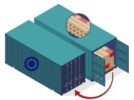
Switch: This is a variant of the rip-on/rip-off method. In the port of departure, illicit products are placed in an accessible place in the container. At the destination port, before the container is inspected, the products are removed and transferred to another container that has already been inspected or it does not need to be inspected.
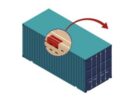
Within legitimate goods: Illicit products are concealed or incorporated into the legitimate goods transported in the container. This method typically requires the involvement of the owners of the legal cargo and possibly also of corrupted dock workers.
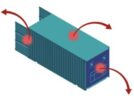
In container structure: Illicit products are concealed in areas of the container such as insulation materials within the walls and floorings, cooling compartments, or in the exterior beams. This technique requires the involvement of corrupted port employees to place and retrieve illicit goods.
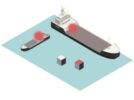
Commercial vessels and drop-off: The illicit products are transported by a variety of commercial vessels such as cargo ships, fishing vessels and tankers. In the proximity of the destination, the consignment is dropped off in the sea for collection.

Pleasure vessels: Due to the less stringent checks, pleasure vessels, such as yachts, are frequently used for the transportation of illicit products.
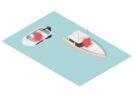
Inflatable and speed boats: In the case of illicit consignments of short-medium distances and/or in coastal waters, small custom-made vessels are sometimes used.
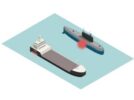
Underwater attachments and semi-submersibles: Illicit products are transported in missile-shaped containers attached to the hull of the vessels below the water. This method requires the use of specialised divers at both the origin and destination ports.
Despite the specific method, in most cases, corruption has a relevant role in the success of the trafficking as it helps to undermine transport infrastructure or gain access to EU ports.[3]
Air mode of transport
Another common transportation modus operandi exploited by criminals involved in illicit trafficking is air transport. The usage of air transport for criminal purposes mostly relies on commercial aviation through the misuse of scheduled air transport (e.g., passengers and cargo flights) and general aviation (e.g., wide variety of private civil flights). Criminal flights may be operated in three ways: (i) “white” flights are operated in full compliance with general aviation rules; (ii) “grey” flights apparently follow existing regulations, but at some points they deviate from standard procedures (e.g., abuses of reporting, unscheduled stops/touch-and-go and drop-off); (iii) “black” flights are fully unreported, they consist of clandestine flights operated at low altitude, on radio silence, etc. The reliance on air transport for illicit trafficking purposes has as main advantage the possibility of organizing large consignments that can be transported over long distances in relatively short time. The risks associated with this mean of transportation vary greatly according to the typology of flights. Commercial flights are the riskiest and thus, the least exploited, due to the intensive security checks both on passengers and goods. Instead, private planes are less targeted by security checks and need to comply with less security requirements; as a consequence, they are subjected to the misuse by criminals to a greater extent.[4]
The most common aircrafts and related techniques used for the purpose of illicit trafficking through aviation are displayed below.[5]
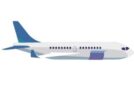
Commercial passenger flights: Illicit trafficking trough commercial passenger flights mostly involved passengers concealing some illicit products in their luggage or in/on their bodies. This method usually does not necessitate the assistance of corrupted personnel. Generally, this modus operandi is used for the transportation of limited quantities of illicit products.
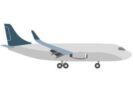
Cargo flights: In the case of the exploitation of cargo flights, illicit products are usually concealed in parcels or incorporated in the legitimate goods transported by the sender of the legal cargo.
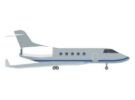
Private jets: Criminal networks often rely on private jets to smuggle large quantities of illicit products over long distances, including transatlantic flights. This modus operandi is typically chosen due to the perceived less stringent controls private jets are subjected to. Very often the crew members of the flight are aware and complicit.
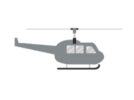
Helicopters: Sometimes also helicopters are used by criminal networks to traffic illicit products on short distances as they offer the possibility of avoiding land security checkpoints.

Unmanned Aerial Vehicles (UAVs): UAVs (i.e., drones) consist of an increasingly used modus operandi exploited by criminal networks to smuggle illicit products. This method is especially used to deliver drugs in harshly reachable places (e.g., prisons) or to avoid land borders.
Land mode of transport
Besides maritime and air transportation, illicit products are often trafficked by land. This mode of transport is very frequent for intra-EU trafficking. Indeed, once the illicit products have reached the European mainland most often by sea or air, the distribution to EU MSs mostly occurs by land. This mode of transportation for intra-EU trafficking is often selected by criminal networks due to the advantages brought by the Schengen area that allows free movement of people and goods without systematic controls at the borders. To a lesser extent, the land mode of transportation can also be used for the transferring of illicit products from the origin to the destination countries. Illicit products can alternatively be loaded on private vehicles (e.g., cars, trucks) and commercial trucks where they are concealed among legitimate goods.[6]
[1] UNODC, “Global Study on Firearms Trafficking 2020” (Vienna: United Nations on Drugs and Crime, 2020).
[2] EMCDDA and Europol, EU Drug Markets Report 2019 (LU: Publications Office, 2019), (SOCTA) 2021: A Corrupting Influence : The Infiltration and Undermining of Europe’s Economy and Society by Organised Crime. (LU: Publications Office, 2021).
[3] Europol, European Union Serious and Organised Crime Threat Assessment (SOCTA) 2021.
[4] EMCDDA and Europol, EU Drug Markets Report 2019; EMCDDA, EU Drug Market, Cocaine; Europol, European Union Serious and Organised Crime Threat Assessment (SOCTA) 2021.
[5] EMCDDA and Europol, EU Drug Markets Report 2019; EMCDDA, EU Drug Market, Cocaine.
[6] EMCDDA and Europol, EU Drug Markets Report 2019.